Blog post SEO is essential for your blog’s long term success.
Whether you are blogging for money, traffic, or just working on your corporate blog, it is important that you SEO your blog posts using solid and proven practices.
Search Engine Optimization will help you create awesome blog posts that both users and search engines will love.
Once you learn how to do this correctly, everything else becomes easier.
SEO for Blog Posts
These are the 10 tips to follow to optimize your blog posts and achieve the same good results over and over again.
- Start thinking about SEO before writing a new blog post
- Define your blog post goals
- Do Keyword research
- Understand the user intent
- Analyze Google SERPS
- Write the blog post content
- Optimize your blog post
- Publish and promote your blog post
- Measure and evaluate the results
- Rinse and Repeat
Tip 1: Start thinking about SEO before writing a new blog post
One of the most common reasons many bloggers fail is because they think about SEO after they finish writing their blogs and not before.
This is a huge mistake. The SEO process starts BEFORE creating the blog content.
It is SEO that will guide you on what to write about and how to promote it.
So, the first lesson here is that you don’t just start writing and publishing content on your blog but you follow a more formal procedure, like the one outlined below.
Tip 2: Define your blog post goals
Each and every piece of content that you publish on your website, should have a clear and specific goal.
Let’s see below some real examples:
Many blogs are used as money-making tools. Bloggers maintain rich content websites and they make money from AdSense, affiliate marketing or direct advertising.
It’s a model that works and one that blog posts play a very important role.
In this case, the goal of a new post would be one (or more) of the following:
- Get more relevant content indexed by Search Engines
- Promote your existing posts by adding internal links pointing to them
- Review a product or service and make affiliate sales
- Get in touch with your subscribers and remind them about your existence.
- Target a specific keyword that you have no current rankings
- Use the new post in your social media campaigns.
- Use the new post as a way to get the attention of other bloggers and possibly acquire new backlinks.
- Demonstrate your expertise about a topic
Blogging for an eCommerce website
An active blog is one of the best companions of e-commerce websites.
Blogging can help you boost your sales in several ways, and as you might have guessed, this is also related to the goal of your blog post.
So, what is the goal of blogging for eCommerce websites:
- Rank for long tail keywords related to your products
- Educate users about the use and benefits of your products or services
- Show potential customers that you have an active website (this is an indirect signal of trust)
- Promote the blog post on social media and drive traffic to your website
- Add more people to your email list.
- Improve your Google rankings
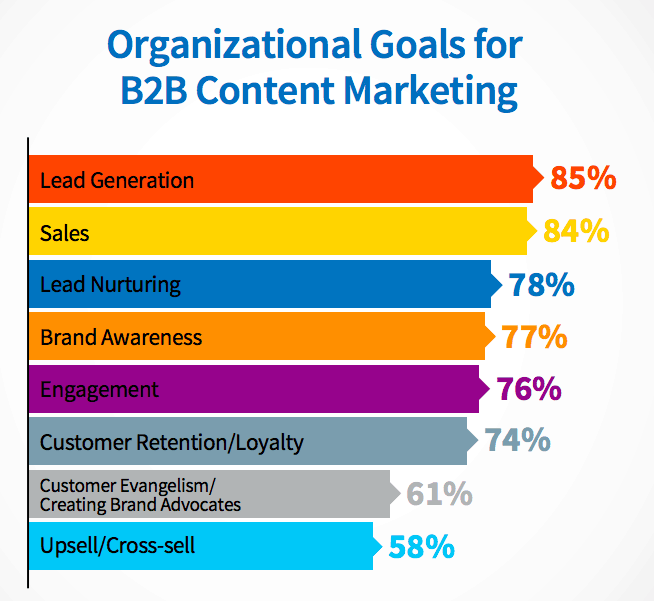
Of course, all the reasons outlined in the ‘blogging for money’ section are also relevant for ‘eCommerce blogging’ as well.
Blogging for a corporate website
Any type of website should have a blog section, and this is also true for corporate websites.
A blog can help you:
- Share news about the company
- Introduce company members to the public
- Provide information about the company and its services
- Share the strategy and vision.
For sure, there are more examples where blogging can be used, but the above cover the majority of the cases.
Set up measurable blog post goals
Before proceeding to the next step, you should also have clear in your mind how to evaluate the success or not of your blog post goals.
For example, if your goal was to inform customers about your new offers, you need to decide which metrics to use (website visits, social shares, sales, etc.) for this purpose.
Google analytics, SEMRUSH, or any other tools you use can help you set up and monitor measurable goals for your blogs.
Tip 3: Do Keyword research
Now that you have set the goal of your blog post and how to evaluate its performance, it’s time to get your hands dirty and do your keyword research.
Keyword research will help you:
- Find out which keywords to target
- Come up with a good post title.
- Optimize your post (on-page SEO)
- Understand user intent
- Create SEO friendly content
Now let’s see below how keyword research can give you the answers to the 5 points above.
A Step by Step Example
Assume that you are running an SEO blog (like the one you are reading now) and want to do keyword research to decide on your next blog post.
These are the steps to follow:
#1 – Think about the goals and general topic for your new post.
The goal of the new post is to get more traffic from Google for keywords related to SEO and to promote my SEO Training Courses.
#2 – Search Google for your general terms
When you go to Google and type ‘SEO’ beside the normal search results and ads, you will also see a section called “People Also Ask” and “Related Searches”.

What you are looking for at this stage are terms in those sections that match your post’s goal.
Since your goal is to write a blog post and target people that are new to SEO, the term ‘SEO tutorial’ seems to be a good match.

Take that term and repeat the search.
Now that your search is more specific, besides looking at the “People Also Ask” and “Related Searches”, you should also look at the actual search results and in particular the titles used.

My goal is to come up with two or three phrases that are related to “SEO tutorial”. I have selected the following:
- “SEO tutorial for beginners”
- “SEO tutorial step by step”
- “Do It Yourself SEO tutorials”
All these keyword phrases are highly relevant to my post’s goal.
Next and before crafting the title for your blog post, check the search volume for those keywords to make sure that there are people searching for those terms in Google.
You can do this using any tool that can give you the average monthly search volume for particular keywords.
I like to use SEO Keyword Magic, which is a feature of SEMRUSH.
As you can see below, there is a decent search volume for the above terms and a lot of variations, including long-tail keywords, which is a good signal that the right choice was made.
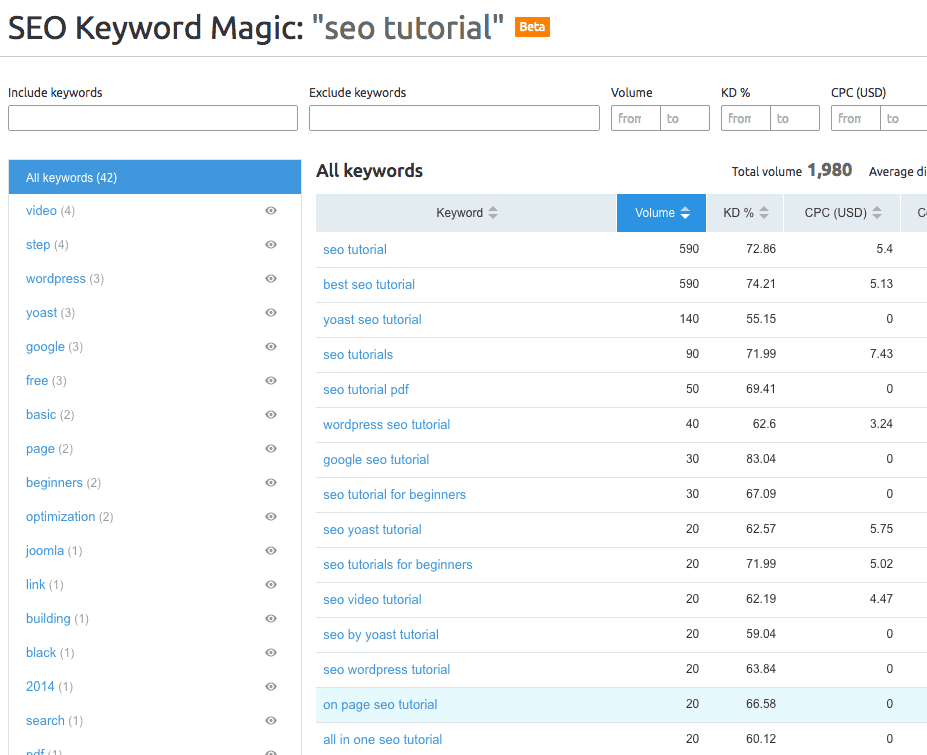
#3 – Craft your post title
The next step is to create the post title. A good SEO title should have the following characteristics:
- Includes your target keywords and variations
- Accurately describes the post’s content
- It’s close to 60 characters so that is shown in Google’s search results without breaks
- It’s interesting for the users so that they click on it.
- It’s unique for your website.
Based on the above, I wrote the following title:
“The Ultimate DIY SEO Tutorial (Step by Step) For Beginners“.
It is less than 60 characters, it includes variations of my target keywords and it accurately describes the post’s content.
In addition, the word ‘Ultimate’ and ‘Step by Step’ gives potential visitors a very good indication that they can expect to read a long post in a step by step format.
Tip 4: Understand the user intent
The next step is to start thinking about the actual content of your post i.e. what to write about.
To successfully do this, you first need to understand the ‘user intent’ and also find out what type of content Google wants (as we will see in Step 5 below).
In the past, SEO was about filling pages with keywords and synonyms and building links but this is no longer the case.
In order for your post to be ‘eligible’ to appear in the first pages of Google, it has to satisfy the ‘user intent’.
In other words, it has to be useful, interesting and something that Google searchers want to read.
For example, what does someone searching for ‘SEO Tutorial’ is looking for?
- A comprehensive guide on how to do SEO?
- A post to teach them SEO?
- A DIY way to learn SEO?
In our example, it’s all of the above.
Someone may say that in the example above, the user intent was too obvious so let’s consider another example that is trickier.
A user types the following query in Google “How to lose 10 pounds in 2 weeks”. What is their intent?
Do they need to read the theory of dieting and healthy living? No. Their intent is to get precise instructions with numbers and calculations on what to do in order to lose 10 pounds in 2 weeks.
For those that are into fitness know that this is close to impossible but nevertheless the intent of the user when searching for that term is to get the necessary steps even if is not possible to actually lose 10 pounds in just 2 weeks.
Since there is a large number of users searching for that term, if you want to get your article in the first pages, you need to try and answer their queries in detail.
Tip 5: Analyze Google SERPS
The best and most effective way to find out what type of content satisfies the user intent and how long to make your blog posts is to search for your keywords in Google.
Open Google and search for ‘SEO Tutorial’. Click on each of the links on the first page and examine the following:
- The type of content (is it text, video, slideshows, images?)
- The length of the posts
- The structure of the posts
What you will notice is that they have the following similarities:
- Mostly text content with some images and videos
- Very long posts (some go over 10K words)
- All posts have a table of contents to ease navigation
- In terms of context, they cover all aspects of SEO from domain registration to website promotion.
So, by performing this quick and easy way of analyzing your competitors, you know what type of content to provide, how long to make your content and you also have a very good idea of what type of content Google wants for the particular keywords.
Tip 6: Write the blog post content
The above steps shouldn’t take you more than 30 minutes to complete. Once you follow this procedure a number of times, it becomes very easy to implement.
Creating the post content is where you will spend the majority of your time.
Some statistics to consider related to blog posts and rankings:
The average content length of the Top 10 results in Google is around 2400 words.
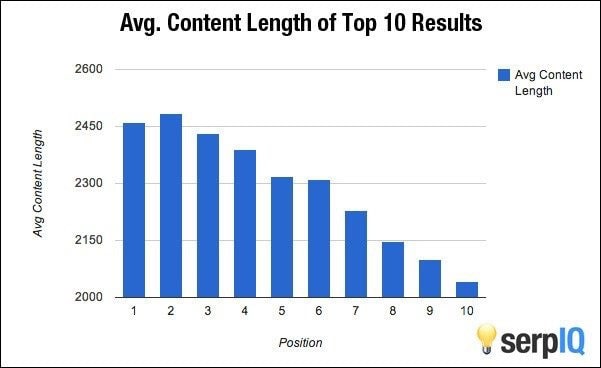
Other things to have in mind while writing your post’s content:
- Use H2 headings to break your content into subsections.
- Use different formatting styles (bold, italics) to enhance readability.
- Use short paragraphs (2-3 lines max)
- Backup your writing and ideas with research data and statistics
- Link to other posts (both internal and external) to help users find out more about the specific topic.
- Check spelling and grammar and make sure that everything you write makes sense.
Tip 7: Optimize your blog post
Even if you are an experienced blogger and have written SEO friendly posts in the past, it’s always good to revise your work before you hit the publish button.
Some things to consider:
SEO Friendly URLs: When publishing your post, WordPress will automatically create the slug for the post by taking into account the post title and separating the different words with ‘-‘.
While this is a good start, you can improve your URL further by removing some of the words that are not so useful to Google.
For example, the title of my post was ‘The Ultimate DIY SEO Tutorial (Step by Step) For Beginners’, and the permalink URL was changed to ‘diy-seo-tutorial-for-beginners’, which is more optimized.
Google featured snippets: Google is using featured snippets for a number of search queries and it is important that you optimize your content so that it’s eligible to be shown in a featured snippet.

Unique Description: Besides having a unique title, you also need to provide Google with a meta description for your blog post.
The description should be:
- Close to 155 characters
- Unique (don’t use the same description on more than one pages/posts)
- Should include your target keywords and variations but don’t do keyword stuffing.
Pro Tip: Read my SEO Tips article for examples on how to write good SEO descriptions.
Tip 8: Publish and promote your blog post
After long hours of exhausting work, you have finally managed to hit the publish button!
Well done but this is not the end of the story.
It’s now time to start thinking about blog post promotion.
Even if the goal of your post was to get in touch with your subscribers or customers, it’s always a good practice to try and push your post.
By push, I mean to get it in front of the eyes of as many people as possible.
To be more precise, here is a list of things you can do after a new blog post is published:
- Schedule the post to be shared multiple times in your business social media accounts.
- Share the post in your personal social media accounts
- Add a couple of links pointing to the new post from older posts on your website
- Use Facebook paid ads and promote your post to a defined Facebook Audience. Using this technique consistently a number of times will help you increase your Facebook organic reach.
- Share the new post with your email subscribers
- Try email outreach.
- Find people on Twitter, Linkedin, Facebook groups that talk about your topics and let them know about your new post.
- Go to Quora and search for questions related to your blog topics and if relevant mention your blog.
- Guest post on related websites and link to your blog
For sure there are many more things you can do to get your blog noticed. While this is a very time-consuming task, if you don’t do it, only a few people will have a chance to read your magnificent piece of content and your blog post will not meet its goal.
Tip 9: Measure and evaluate the results
In Step 2, besides setting the post-goal, we also decided how to measure the performance and evaluate the success or not of the new blog.
After Step 8 is completed, it’s now time to look at those metrics and study the results.
Provided that you have your Google Analytics set up correctly (with goal tracking), you will be able to see:
- How many people visited your new blog post
- How much time they have spent on the page
- From what channels (organic, email, direct, social) you got traffic
- How many leads (or sales) were generated because of the post
- How much money you earned from AdSense or Advertising (if you are monetizing your blog through ads)
- How many people signed up for your newsletter
- How many shares (likes, tweets) you received
In addition to the above, after a few weeks, you can also check the ranking position of your blog post for various keywords. You need a tracking tool to do this.
I am using SEMRUSH position tracking tool. Every time I publish new content, I track the ranking position of the post for several keywords.
As you can see it already ranks high for several keywords.
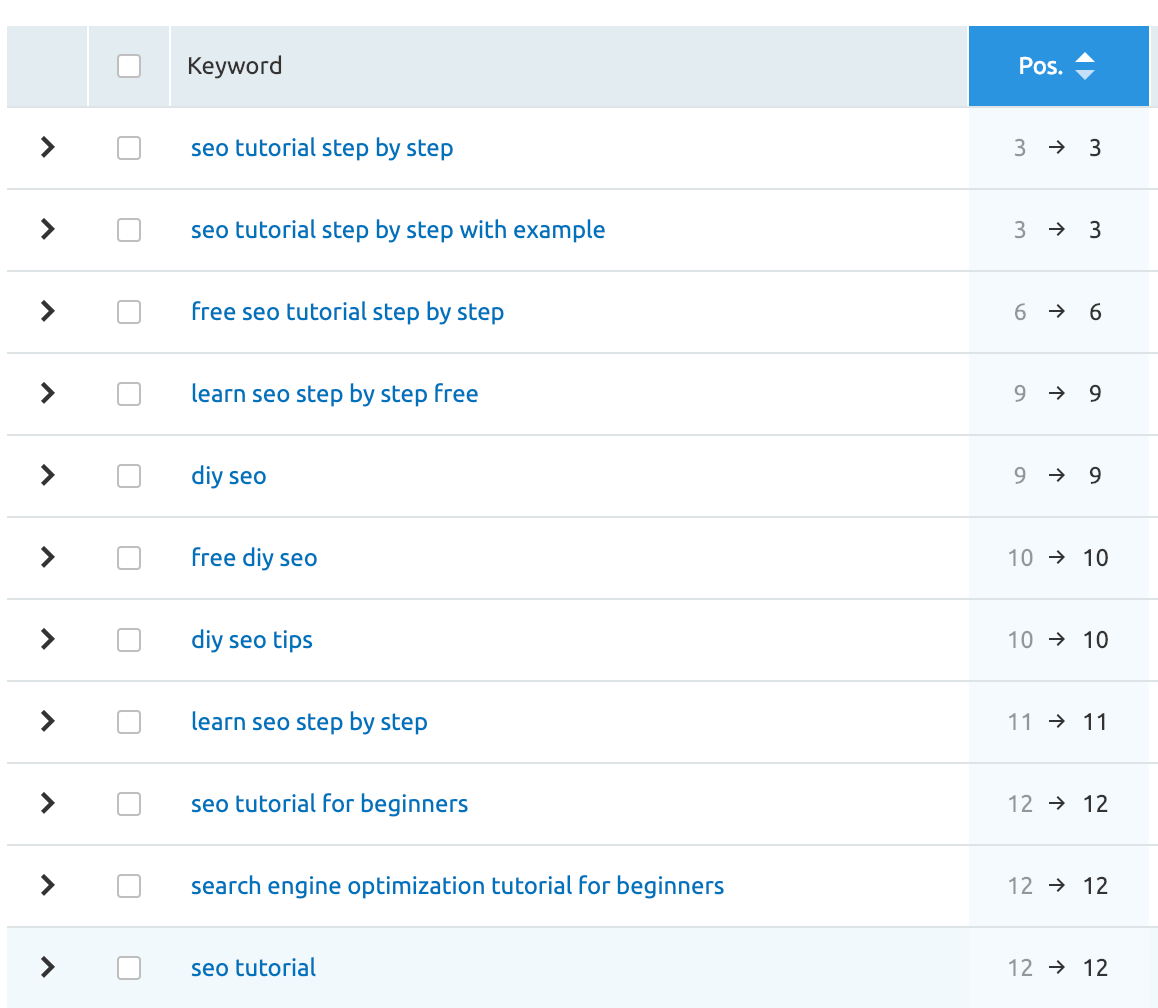
Tip 10: Rinse and Repeat
Consistency in publishing good quality content for a long period of time is what will get you results. It’s a lot of work but don’t forget that once you master this technique, traffic will flow in 24/7, and achieving your blog post goals will be easier.
If you are wondering what I mean by consistency and how long will it take you to reach that point, have a look at the graph below that shows the coloration between the number of published posts and traffic.
Notice how traffic increases as you publish more content and also make note of the tipping point that happens after you have around 400 published posts.
Don’t forget that blogging and SEO is a continuous learning process.
There are so many things to take care of when running a successful blog that makes it impossible to get it right all the time.
It’s normal to make mistakes or to omit some of the best practices but it’s very important that you learn from your mistakes and make your next blog post better.


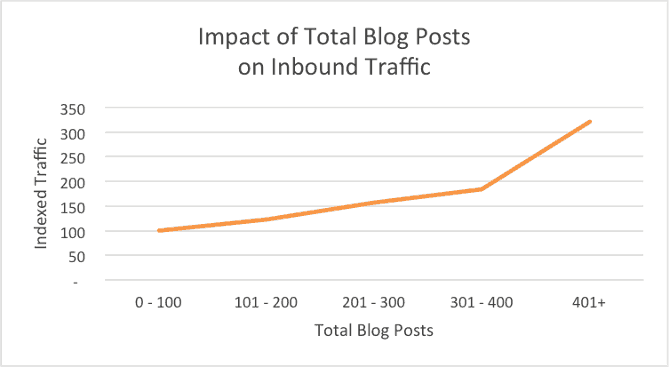


Hi, that’s a great list of tips…. I guess its all about how much time you put into it as well. Planning great content takes time.
Hi,
It is an awesome content about SEO very informative and useful for beginners.
thanks for sharing this article.
Thank you very much for sharing this, I will put it to the test.
regards
This is very nice post about SEO Thanks
Well explained. My all doubts have been clear now. I will definitely try this strategy on my blog. great to read this.
great SEO Tips, Thank you for sharing
Very nice website and informative for those of us struggling with SEO. Have signed up for newsletters and look forward to some excellent content.